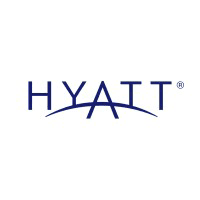
AC Hotels by Marriott
How much does AC Hotels by Marriott cost?
Initial Investment Range
$18,188,010 to $59,042,010
Franchise Fee
$172,300 to $282,200
The franchisee will establish and operate an AC Hotels by Marriott select-service hotel.
Enjoy our partial free risk analysis below
Unlock the full risk analysis to access 9 more categories covering 100+ risks.
AC Hotels by Marriott March 31, 2025 FDD Risk Analysis
Free FDD Library AI Analysis Date: July 16, 2025
DISCLAIMER: Not Legal Advice - For Informational Purposes Only. Consult With Qualified Franchise Professionals.
Franchisor Stability Risks
Start HereDisclosure of Franchisor's Financial Instability
Low Risk
Explanation
This risk was not identified. The financial statements for the franchisor, MIF, L.L.C. (MIF), a subsidiary of Marriott International, Inc. (MII), provided in Exhibit J, show it to be a highly profitable entity with significant positive member's equity. While a large portion of its assets are receivables from related parties, the franchisor entity itself appears to be financially stable and capable of meeting its obligations. Therefore, the risk of financial instability is considered low.
Potential Mitigations
- An accountant should review the franchisor's financials, including footnotes and the auditor's report, to confirm its financial health.
- Discuss with your business advisor the implications of the franchisor being a subsidiary and the nature of its relationship with the parent company.
- It is prudent to have your attorney review any financial performance representations in light of the franchisor's financial condition.
High Franchisee Turnover
Low Risk
Explanation
This risk was not identified. The franchise system status tables in Item 20 show positive net growth in the number of franchised outlets over the past three years. More importantly, the data for 2024 indicates zero terminations, non-renewals, or outlets that ceased operations for other reasons. This indicates a very low, not high, rate of franchisee turnover in the system.
Potential Mitigations
- To gain qualitative insight, consider contacting a diverse group of current and former franchisees listed in the FDD with guidance from your business advisor.
- An attorney can help you formulate appropriate questions to ask former franchisees about their reasons for leaving the system.
- Your accountant can help you analyze the turnover data presented in Item 20 across multiple years to confirm trends.
Rapid System Growth
Medium Risk
Explanation
The franchise system is expanding very quickly. Item 20 data shows that the number of franchised outlets has grown by over 30% in the last two years. Additionally, Table 5 indicates there are 127 franchise agreements already signed for hotels that have not yet opened. Such rapid growth could potentially strain the franchisor's ability to provide consistent and high-quality support, training, and site selection assistance to all new and existing franchisees.
Potential Mitigations
- Inquire with the franchisor about their specific plans and resource allocation for scaling support infrastructure to match unit growth.
- Asking a broad range of existing franchisees about the current quality and responsiveness of franchisor support is a key due diligence step.
- Your business advisor can help you assess whether the franchisor's management team and systems appear capable of handling this rate of expansion.
New/Unproven Franchise System
Low Risk
Explanation
This risk was not identified. The franchisor, MIF, has been offering AC Hotels by Marriott franchises since 2011, and the system has over 100 operating outlets in the U.S. and Canada, as shown in Item 20. The brand and the franchise system are well-established and not new or unproven. Financial statements provided are audited, as is appropriate for an established franchisor.
Potential Mitigations
- When evaluating any franchise, it is wise to have your business advisor assess the franchisor's history and the maturity of its systems.
- An accountant should always verify that the financial statements provided in Item 21 are audited, especially for non-startup franchisors.
- Speaking with the earliest franchisees in a system can provide your attorney valuable insight into how support has evolved over time.
Possible Fad Business
Low Risk
Explanation
This risk was not identified. The franchised business is the operation of select-service hotels under the AC Hotels by Marriott brand. The hotel and lodging industry is a well-established, long-standing sector of the economy. This business model is not based on a new or fleeting trend and therefore is not considered a fad.
Potential Mitigations
- For any business concept, it's beneficial to have a business advisor help you research its long-term market demand and resilience.
- Evaluating a franchisor's commitment to research and development can provide insight into the brand's potential for long-term relevance.
- Your financial advisor can help assess a business model's sustainability and its ability to withstand various economic cycles.
Inexperienced Management
Low Risk
Explanation
This risk was not identified. Item 2 of the FDD lists the directors and principal officers of the parent company, Marriott International, Inc. These individuals have extensive and high-level executive experience at Marriott and other major, well-known corporations such as Hyatt, McDonald's, and PepsiCo. The management team appears to be highly experienced in both the lodging industry and in managing large-scale business operations.
Potential Mitigations
- Even with an experienced team, it is beneficial to discuss with your business advisor how the management structure might impact your specific franchise.
- For any franchise, speaking with existing franchisees provides valuable, real-world insight into the quality of management's support.
- An attorney can review the executives' backgrounds in Item 2 for any disclosed litigation or bankruptcy history that might be a concern.
Private Equity Ownership
Low Risk
Explanation
This risk was not identified. Item 1 of the FDD states that the ultimate parent company, Marriott International, Inc., is a publicly-traded corporation listed on the NASDAQ stock market. The franchisor is not owned or controlled by a private equity firm.
Potential Mitigations
- It is always prudent for your attorney to verify the ownership structure disclosed in Item 1 of the FDD.
- When considering any franchise, a business advisor can help you understand the potential implications of its ownership structure.
- If a franchisor were owned by a private equity firm, researching that firm's history with other franchise brands would be a critical due diligence step.
Non-Disclosure of Parent Company
Low Risk
Explanation
This risk was not identified. Item 1 clearly discloses that the franchisor, MIF, is a subsidiary of Marriott International, Inc. (MII). While the FDD does not contain the parent company's financials, MIF's own audited financial statements are provided. As MII is a publicly-traded company, its financials are publicly available, and there is no concealment of the parent's identity or financial condition.
Potential Mitigations
- An accountant can help you locate and review the public financial filings of a parent company if it is not included in the FDD.
- Your attorney should review any disclosed guarantees or support obligations from a parent company to the franchisor entity.
- For any franchise, understanding the complete corporate structure and the flow of funds between entities is a valuable exercise for your accountant.
Predecessor History Issues
Low Risk
Explanation
This risk was not identified. Item 1 of the FDD does not list any predecessors for MIF, L.L.C. or the AC Hotels by Marriott brand in the U.S. and Canada. The FDD explains the brand was developed through a joint venture, not acquired from a predecessor with a potentially negative history. Therefore, there are no predecessor-related litigation or bankruptcy issues to consider.
Potential Mitigations
- When a franchisor does have a predecessor, it is important to have your attorney carefully review its history as disclosed in Items 1, 3, and 4.
- A business advisor can help you research the public reputation and history of any disclosed predecessor.
- Speaking with franchisees who operated under a predecessor can provide your attorney valuable historical context.
Pattern of Litigation
High Risk
Explanation
The franchisor's parent, MII, discloses extensive and material litigation in Item 3. This includes a multi-district litigation over a massive data security breach, subsequent investigations and penalties from multiple domestic and international regulators, and other class action lawsuits alleging antitrust violations. This history suggests a pattern of significant legal challenges that could impact the brand's reputation and resources, posing a risk to the entire system.
Potential Mitigations
- A thorough review of all disclosed litigation with your franchise attorney is essential to understand the potential impact on the franchise system.
- It is wise to have your business advisor research the public perception and news coverage surrounding the disclosed litigation.
- Discuss with your insurance broker how the franchisor's litigation history might affect your ability to obtain necessary insurance coverages, such as cyber liability.
Disclosure & Representation Risks
Example Risk: Franchisee Financial Obligations
Blue Risk
Explanation
This risk involves the financial obligations that a franchisee must meet, including initial fees, ongoing royalties, and other required payments. Understanding these obligations is crucial for long-term success.
Potential Mitigations
- Carefully review the Franchise Disclosure Document (FDD) and consult with a franchise attorney to fully understand all financial commitments before signing.
- Conduct regular risk assessments
- Implement monitoring and reporting systems
Unlock Full Risk Analysis
Purchase the complete risk review to see all 102 risks across all 10 categories.
Financial & Fee Risks
Example Risk: Franchisee Financial Obligations
Blue Risk
Explanation
This risk involves the financial obligations that a franchisee must meet, including initial fees, ongoing royalties, and other required payments. Understanding these obligations is crucial for long-term success.
Potential Mitigations
- Carefully review the Franchise Disclosure Document (FDD) and consult with a franchise attorney to fully understand all financial commitments before signing.
- Conduct regular risk assessments
- Implement monitoring and reporting systems
Unlock Full Risk Analysis
Purchase the complete risk review to see all 102 risks across all 10 categories.
Legal & Contract Risks
Example Risk: Franchisee Financial Obligations
Blue Risk
Explanation
This risk involves the financial obligations that a franchisee must meet, including initial fees, ongoing royalties, and other required payments. Understanding these obligations is crucial for long-term success.
Potential Mitigations
- Carefully review the Franchise Disclosure Document (FDD) and consult with a franchise attorney to fully understand all financial commitments before signing.
- Conduct regular risk assessments
- Implement monitoring and reporting systems
Unlock Full Risk Analysis
Purchase the complete risk review to see all 102 risks across all 10 categories.
Territory & Competition Risks
Example Risk: Franchisee Financial Obligations
Blue Risk
Explanation
This risk involves the financial obligations that a franchisee must meet, including initial fees, ongoing royalties, and other required payments. Understanding these obligations is crucial for long-term success.
Potential Mitigations
- Carefully review the Franchise Disclosure Document (FDD) and consult with a franchise attorney to fully understand all financial commitments before signing.
- Conduct regular risk assessments
- Implement monitoring and reporting systems
Unlock Full Risk Analysis
Purchase the complete risk review to see all 102 risks across all 10 categories.
Regulatory & Compliance Risks
Example Risk: Franchisee Financial Obligations
Blue Risk
Explanation
This risk involves the financial obligations that a franchisee must meet, including initial fees, ongoing royalties, and other required payments. Understanding these obligations is crucial for long-term success.
Potential Mitigations
- Carefully review the Franchise Disclosure Document (FDD) and consult with a franchise attorney to fully understand all financial commitments before signing.
- Conduct regular risk assessments
- Implement monitoring and reporting systems
Unlock Full Risk Analysis
Purchase the complete risk review to see all 102 risks across all 10 categories.
Franchisor Support Risks
Example Risk: Franchisee Financial Obligations
Blue Risk
Explanation
This risk involves the financial obligations that a franchisee must meet, including initial fees, ongoing royalties, and other required payments. Understanding these obligations is crucial for long-term success.
Potential Mitigations
- Carefully review the Franchise Disclosure Document (FDD) and consult with a franchise attorney to fully understand all financial commitments before signing.
- Conduct regular risk assessments
- Implement monitoring and reporting systems
Unlock Full Risk Analysis
Purchase the complete risk review to see all 102 risks across all 10 categories.
Operational Control Risks
Example Risk: Franchisee Financial Obligations
Blue Risk
Explanation
This risk involves the financial obligations that a franchisee must meet, including initial fees, ongoing royalties, and other required payments. Understanding these obligations is crucial for long-term success.
Potential Mitigations
- Carefully review the Franchise Disclosure Document (FDD) and consult with a franchise attorney to fully understand all financial commitments before signing.
- Conduct regular risk assessments
- Implement monitoring and reporting systems
Unlock Full Risk Analysis
Purchase the complete risk review to see all 102 risks across all 10 categories.
Term & Exit Risks
Example Risk: Franchisee Financial Obligations
Blue Risk
Explanation
This risk involves the financial obligations that a franchisee must meet, including initial fees, ongoing royalties, and other required payments. Understanding these obligations is crucial for long-term success.
Potential Mitigations
- Carefully review the Franchise Disclosure Document (FDD) and consult with a franchise attorney to fully understand all financial commitments before signing.
- Conduct regular risk assessments
- Implement monitoring and reporting systems
Unlock Full Risk Analysis
Purchase the complete risk review to see all 102 risks across all 10 categories.
Miscellaneous Risks
Example Risk: Franchisee Financial Obligations
Blue Risk
Explanation
This risk involves the financial obligations that a franchisee must meet, including initial fees, ongoing royalties, and other required payments. Understanding these obligations is crucial for long-term success.
Potential Mitigations
- Carefully review the Franchise Disclosure Document (FDD) and consult with a franchise attorney to fully understand all financial commitments before signing.
- Conduct regular risk assessments
- Implement monitoring and reporting systems
Unlock Full Risk Analysis
Purchase the complete risk review to see all 102 risks across all 10 categories.











